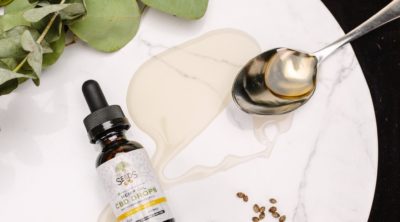
I am sure you must have touched upon the subject of herbs and the uses of herbs at least once in your lifetime. You must have studied what herbs are; however, you might have a vague recollection of the same. Let me rejuvenate your knowledge meter by introducing you to this article. …
A herb, in elementary terminology, is any plant or shrub that could prove useful to man. Well, this is a definition that is too generic to be explained further. Many plants, shrubs, trees and roots are considered to be equivalent to herbs. In the actual, herbs have inherent properties that make all the parts of the plant worth utility. Roots, stems, seeds, flowers and leaves could be put into productive use. The uses of herbs are abundant. They have a boundary that stretches far and wide for itself to expand with greater velocity. It is necessary that we acknowledge the value of herbs that nature has bestowed on human beings. Herbs are infinitely gifted with medicinal properties and are also equipped with culinary and savory attributes. Nature is devoid of chemical compositions and urges humans to create and live in harmony with nature and its laws. Our human body, according to the ancient Ayurveda, consists of five essential elements of the universe. They are Vata (wind) – Air and Space, Pitta (bile) – Fire and Water and Kapha (phlegm) – Water and Earth. It is only when these five elements strike the perfect balance, will there be universal harmony in the human body.
Medicinal Uses of Herbs
Herbs have an abundant source of medicinal purposes to offer, treating all kinds of minor ailments and elevating its magical healing properties to curing the most threatening one’s. Herbs have now been coveted with the tag of being a superior option when compared to other faculties of medicine, especially allopathy drugs. Here are some of the medicinal uses of herbs. Annual plants such as anise, borage, chamomile, coriander, chervil, basil, dill, sweet marjoram, and summer savory complete their entire life cycle and perish in a years time. Biennials such as parsley and caraway grow leaves in the first growing season and sprout seeds and flowers in the second half of the growing season, culminating their life cycle in one year. Here is a table of medical herbs with their corresponding uses.
| Ailment | Herb |
| Allergies | Evening Primrose, Ginkgo,Goldenrod |
| Anti-Aging | Broccoli, Ginkgo, Ginseng, Green Tea |
| Anxiety | St. John’s Wort, Lavender, Poppy, Valerian |
| Acne | Aloe Vera, Bee Balm, Calendula, Cornflower, Dandelion, Evening Primrose, Feverfew, Goldenseal, Green Tea, Lemongrass, Periwinkle, Violet,Yarrow |
| Asthma | Aloe Vera, Chamomile, Eucalyptus, Evening Primrose, Feverfew, Ginkgo, Lobelia, Plantain, Marjoram, Valerian |
| Blisters | Aloe Vera, Calendula, Lavender, Plantain |
| Cirrhosis | Aloe Vera, Dandelion, Evening Primrose |
| Diarrhea | Borage, Chamomile, Goldenseal, Ground Ivy, Plantain, St. John’s Wort, Savory (Summer), Thyme, Uva Ursi Valerian, Yarrow |
| Eye Inflammation | Periwinkle |
| Jaundice | Agrimony, Alderbark, Balmony, Boneset, Celandine |
| Cough | Agrimony, Beethroot, Bindweed, Cicely |
| Flu | Calendula, Echinacea, Eucalyptus, Feverfew, Garlic, Goldenrod, Green Tea, Ground Ivy, Lantana, Plantain, Radish, St. John’s Wort, Tarragon |
| Gallstones | Dandelion |
| Hair Loss | Lavender, Onion, Rosemary Herb |
| Insomnia | Anise, Chamomile, Ginseng, Lavender, Poppy, St. John’s Wort, Violet |
| Nail Biting | Valerian |
| Psoriasis | Aloe Vera |
| Spleen | Dandelion, Uva Ursi |
| Vomiting | Basil, Bee Balm, Chamomile, Mint |
| Weight loss | Evening Primrose |
Culinary Uses of Herbs
Herbs can make your food aroma appetizing and the taste savory and delicious, with an authentic touch they deliver. Most of the herbs used for cooking fall into the perennial category. They continue to grow more than twice during the year. Perennial herbs that are used as additives in dishes, perish at the onset of winter and make a comeback when spring prevails. The most common and widely used herbs to add a herb-y flavor to your dishes are mentioned below.
| Food Platters | Herb Used |
| Anise | Coffee cake, cookies, pickles, candies |
| Basil | tomato sauces, pesto, vinaigrettes |
| Caraway | rye bread, cakes, cookies |
| Cayenne | Meats, soups, sauces, Mexican food |
| Dill Seed | Pickles |
| Ginger | Pickles and oriental cuisine |
| Mint | garnishing purposes, used in lamb dishes |
| Mustard Seed | Pickling and sauces |
| Oregano Leaves | Italian dishes, soups or sauces, meat stews, and added in bean dishes |
| Parsley | soups, sauces, salads, egg, and potato dishes |
| Saffron | For rich flavors and a yellow coloring |
| Sage | used in seasoning and stuffing, pork, poultry dishes |
| Tabasco | Soups, sauces, salad dressings, and marinades |
| Thyme Leaves | sauces, stocks, and meat dishes |
| Turmeric | added in curry powder, food coloring, meat and egg dishes |
Thus, herbs play a major role in curbing the displacement of the five doshas and also aid in formulating the right balance between them. Herbs are now recognized in culinary creations and proposing medicinal maps.


